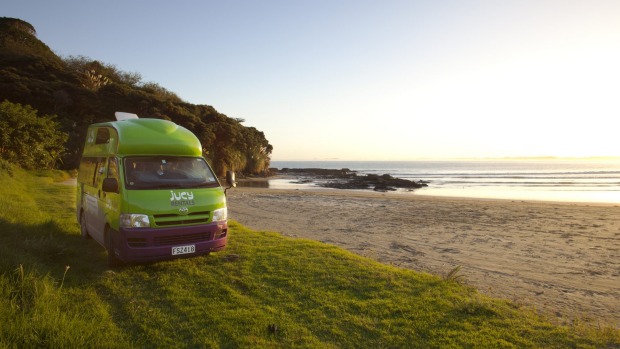
"Which campervan is ours, Dad?" my four-year old asks.
I tell Finn I'm not sure, but that I think it might be one of the vans with a bulbous canopy. "Like a turtle's shell," I explain. "And that's where your bed is, Finn. In the shell, up the top." He says he can't wait to go to sleep.
When I drive the van out of the rental depot, Finn is beside himself. "Over here, Dad," he yells from across the road. He's jumping up and down and waving excitedly, like only kids can.
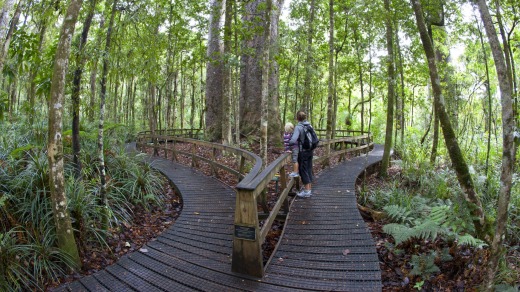
I park beside the curb and open the side door so he can see his new home for the next 12 nights.
"Where's my bed?" he asks.
"Up there," I reply, pointing to a mattress above the driver's cabin.
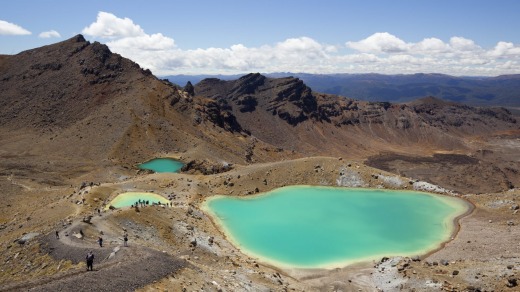
"Can I sleep up there now?"
"Not now," I tell him. "We've just had breakfast. You'll have to wait until we get to our camp ground tonight."
"How long will that be?"
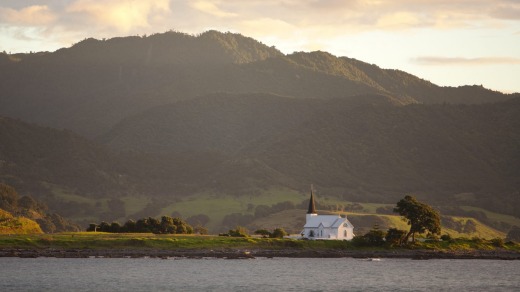
"A long time, Finn."
"How long?"
"Real long," I say. Real long.
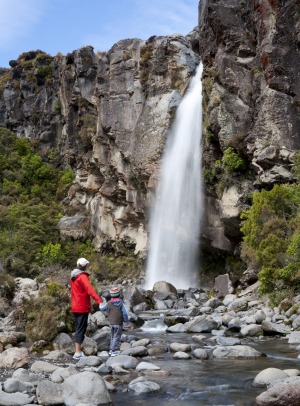
We load our bags and some groceries into the van and drive south through Auckland. The plan is to reach Tongariro National Park before the end of the day, yet we haven't left the urban sprawl behind when Finn is asking if we're nearly there. Michelle, my wife, warns him that we have a long drive ahead of us.
"How long?"
"At least four hours."
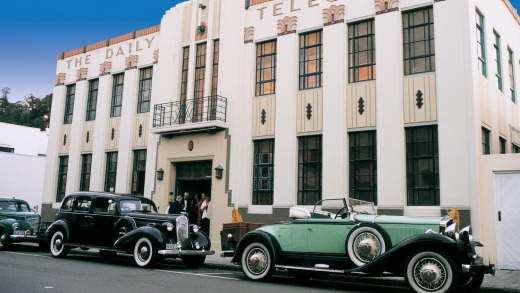
"How long is that?"
"A long time."
"How long?" he insists.
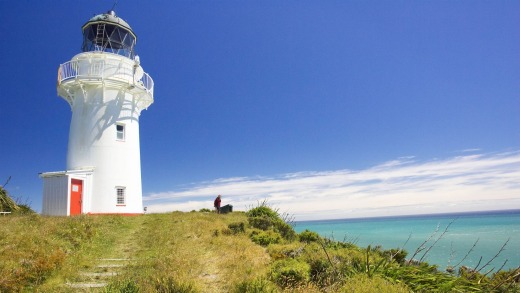
"Ahhh…" she says, thinking, "about as long as it takes to drive from our place to Uncle Dennis' farm."
Finn pauses. "OK," he says. "Can I have a rest now?"
"You can have a rest now."
Many hours later, I pull into a motor home bay at the Department of Conservation's (DOC) Mangahuia camp ground, near the winter ski centre of Whakapapa. It is in this national park where film director Peter Jackson set the mythical kingdom of Mordor in his cinematic Lord of the Rings trilogy, and it was into Mount Ngauruhoe – as Mount Doom – that the hobbit Frodo Baggins cast the treacherous ring.
As I step out from behind the wheel of the van to stretch my legs for the first time since we'd lunched just south of Hamilton, I can immediately see how Jackson chose it above others as the fiery cauldron from which the ring was forged. Even though its summit lies hidden beneath a veil of clouds, it exudes menace. Its slopes are bare and isolated, and a chill wind whistles through the stunted vegetation surrounding the camp. And yet, with the golden rays of the late afternoon sun dappling its naked flanks, it is starkly beautiful.
After we've eaten, Finn is eager to try out his bed and he bounds up before I have a chance to fully extend the mattress. He's less eager to sleep though and spends the next hour talking and singing to himself and peering down at us, wondering aloud why we aren't sleeping too. It is only after repeated attempts to silence him that we decide to ignore him and an hour passes before we realise how quiet it has become inside the van. Finn has finally drifted off.
After breakfast the next morning, we drive to a trail head to Taranaki Falls. The seven-kilometre return hike rises and dips until it reaches a boulder-ringed pool at the foot of a roaring cascade that tips over the edge of a solidified lava flow. The lower slopes of the three mountains protected within the national park boundaries – Ruapehu, Ngauruhoe and Tongariro – are all visible, though cloud blankets each of their peaks. Michelle points out the distinctive conical form of Mount Taranaki, more than 100 kilometres to the west.
The road immediately to the east of the national park crosses the Rangipo Desert, an austere volcanic plain plagued by bitingly cold winds and porous soils. Further on, we skirt Lake Taupo before the road doglegs past gushing waterfalls and through luxuriant grazing pasture towards Hawke's Bay.
Hawke's Bay was New Zealand's pioneering wine region and today a staggering 172 vineyards can be found within a 50-kilometre radius of Napier and its twin city, Hastings. As so often happened, clerics were the original lushes and it was they who started the country's first winery in Napier's suburban fringe.
For more than 100 years, until 1991, Mission Estate operated as a Marist Brothers seminary, with their legacy being the production of some of the finest red and white varietals in the country. The vines were first planted in 1851 and Michelle and I sample from an extensive range inside an elevated tasting room overlooking hectares of vines.
We spend the remainder of a rain-soaked afternoon feeling like we've stumbled on to a movie set. Napier was levelled by an earthquake in 1931 and the art deco architecture that rose from the rubble casts us back to a time before we were born. Sunbursts and polygons and spheres still decorate the building exteriors fronting Tennyson and Emerson streets, and, today, Napier is perhaps the world's best preserved and uniform example of design from that period.
Rain continues the following day as we take the coastal road towards East Cape, New Zealand's most easterly point. Only a few days earlier rain, causing widespread flooding, had lashed this coastline, and we see the damage and debris as we pass.
Waves pound storm-battered bays littered with driftwood and seaside hamlets appear deserted as residents hole up inside their homes. A landslide blocks the gravel track to the East Cape lighthouse and it's not until we reach Hick's Bay that the sun begins to shine. From that point on, the sea's temperament inside the Bay of Plenty is like ying to the yang we've witnessed along the Pacific coast. Glorious sunlight warms each bay and cove and sleepy fishing communities spring to life.
We camp on private land that slopes down to a rocky inlet and, as the sky fills with stars for the first time in days, Finn and I battle rogue penguins and jokers in a make-believe game of Batman and Robin. As we drive back through Auckland, on our way north, we play endless rounds of Rock Scissors Paper and I Spy, and we introduce games where we try to be the first to identify a grey horse or a dairy cow or a camper van. Finn suggests we look for white sheep. In this country, it's like searching for flies in the outback.
Whenever we've been able to we've planned our itinerary around staying at Department of Conservation (DOC) camps and, of those we stay in, the Trounson Kauri Park's facilities surpasses them all. Classified as a "serviced" campsite, for a change it has hot showers, powered sites and a kitchen equipped with kettles and toasters. As a bonus, the magnificent kauri forest starts at our doorstep and Waipoua Forest, where some of New Zealand's largest kauri trees grow, is just a few kilometres further north.
We're awed by the size of the kauri near our camp but some of those in the Waipoua Forest trumped them by a long way. The largest, Tane Mahuta, or Lord of the Forest, stands more than 50 metres tall, though even it isn't as stout as Te Matua Ngahere (Father of the Forest), which, with its 16.5-metre girth, is as wide as a house.
We regrettably leave the hot showers and mains electricity behind and carry on north to Ahipara. A friend had recommended surfing on what's been described as one of the best left-hand breaks in the world and, with the tide out, I drive the van straight on to the southern extremity of the Ninety Mile Beach.
All I see is gentle waves lapping against golden sands. Then a local tells me that better surf can be found around the other side of Tauroa Point. So, after camping on a levelled patch of grass immediately beside the beach (and being feasted on by ravenous mosquitoes), I hire a quad bike that the three of us can ride around the headland. I park the bike at the foot of some towering sand dunes, which Finn and Michelle scramble up and down, then paddle out into a medium-sized swell that offers a surprisingly long ride.
On our last morning, we swim in the bay before setting off on the long drive back to Auckland. The journey allows me to reflect upon all the different things Finn has been able to do during our 12 days on this island and I wonder how much of it he'll remember. I look at him through the van's rear-view mirror and ask him what the highlight of the trip has been. He points up. Sleeping in his elevated bed in the campervan has topped them all.
Qantas, Virgin, Jetstar, Air New Zealand, Emirates and Etihad all fly to Auckland from Sydney, Melbourne, Brisbane or the Gold Coast for as little as $450 return.
New Zealand has excellent facilities for motor home touring. The writer hired a Jucy "Condo" van that comfortably fit two adults and a small child. It cost $59 a day, with an extra $22 per day optional insurance cover and $35 child car seat hire. Total cost for 12 days was $875.
Camping fees at DOC (see doc.govt.nz) can be free or up to $16 per person per night. Save money by buying a weekly pass at participating campervan operators. Freedom camping sites are cheap alternatives and may be located on nominated conservation areas or on private land. They are available only to motor home campers, not tent campers.
There's no shortage of private motor home parks on New Zealand's North Island, but the Department of Conservation-run camp grounds are cheaper and often better located, with many of them campervan-friendly.
A dozen sites beside a 586-hectare forest reserve that's close to the largest kauri trees in New Zealand.
Forty-plus powered sites allowing access to winter skiing and summer hiking on Mount Ruapehu.
Thirty-one powered sites on the shores of Lake Waikaremoana, where boating, fishing, swimming, canoeing and hiking are all popular pursuits.
Twenty-one powered sites on a bayside location in one of the North Island's largest DOC campsites.
Eighteen powered sites in the busy Kauaeranga Valley tramping area.